It started with a case of mistaken identity. I was loitering in the woods, hoping that the roe deer buck I had affectionately named Hellboy would show up. When I saw the movement in the corner of my eye, I instantly began my usual chatter. The repetition of the same phrases, spoken in a low soothing tone, aimed to reassure the young male, who had become familiar with me asking if he’d seen any foxes. On that morning, though, he looked startled. I slowly raised my camera and saw through my viewfinder that the shape frozen in the shadows of the towering horse chestnuts was that of a doe. As she turned to walk away from the strange human talking to her about foxes (well, you would, wouldn’t you?), I saw her swollen belly.
When I returned to this local spot after only a few days, I saw the doe grazing in the field. A shadow moved at her heels. As you can see from the image below, I was some distance from her but could see she’d had her baby. I didn’t know at that point that she’d had twins.
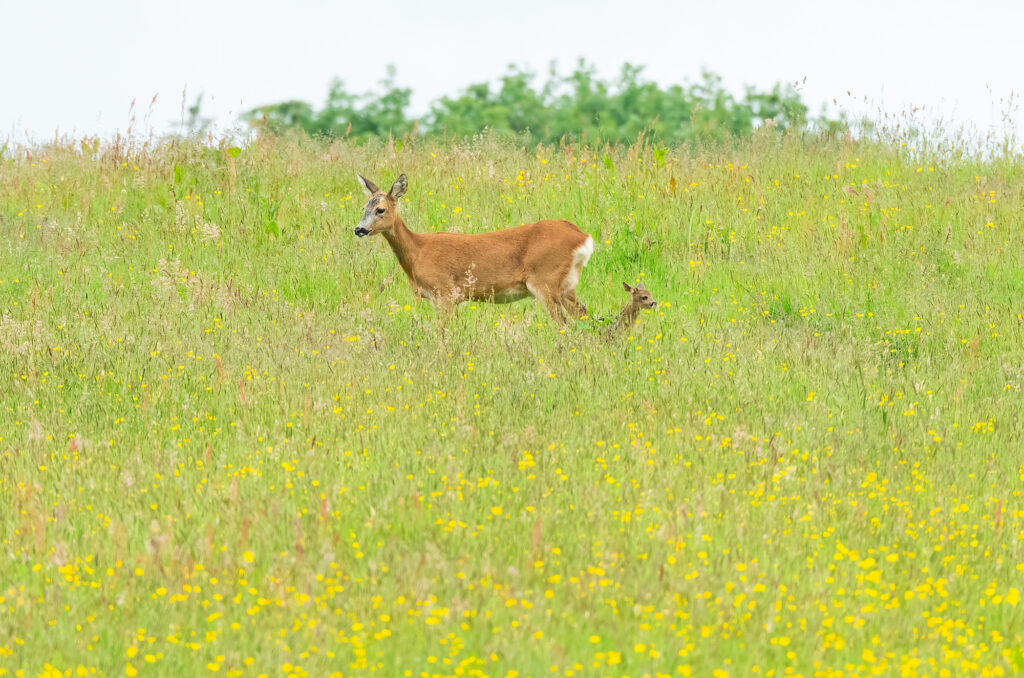
I assumed that watching from this kind of distance across the field would be the closest I would get to this roe deer family. I had no idea that, with a bit of fieldcraft and a lot of patience (from the deer as well), I would be able to capture the images and footage below and be tolerated by these notoriously nervous mammals.
New kids on the block
Photographing the family did not get off to a great start. After spending some fruitless – though peaceful – time watching the field for movement, I had to admit defeat and head home. It wasn’t too much of a disappointment. As any wildlife photographer will tell you, most of our time is spent watching and waiting with nothing to show for it. That’s just how it works. I was heading down the hill in the woods and had almost reached the main path when I just happened to glance to my right. Shining eyes framed by thick black eyelashes stared back at me. I held my breath. The roe kid had done a rubbish job of staying hidden. One clump of vegetation certainly was not enough cover, even for a tiny deer.
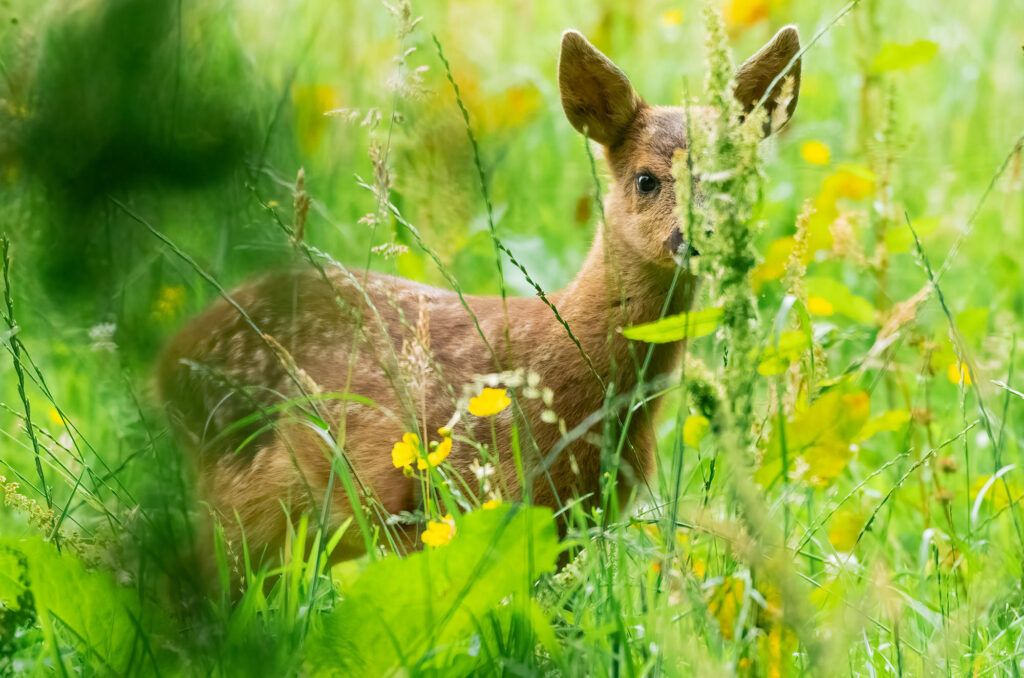
I must point out that no distress was caused to this baby or his/her mother while I captured the image above. It represents just a few seconds of photography before I walked away and turned to see it trotting off through the grass to its mum, who must have been on the other side of the field. However, it felt like a failure somehow – like I should have known it was there. It was clear that both of us needed to learn fast.
Being a wildlife photographer means coming back for more as often as possible. So, it didn’t take long before I had another baby deer surprise. This time, I was better prepared. I sat still on a stump and watched as the doe leapt the fence from the field into the woods where I was sitting. At her heels was one of the kids, who had worked out how to squidge through the fence.
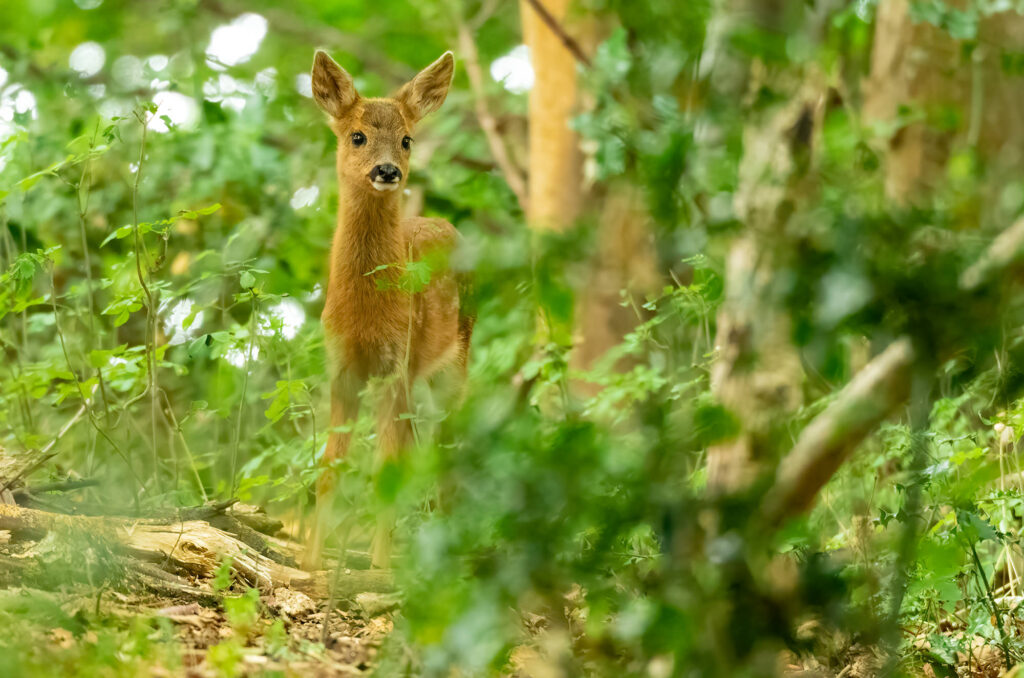
Sadly, the other kid was not so clued-up. Cue many minutes of calling from the distressed youngster as it ran up and down the fence line, trying to find a way through. The mother grazed and waited patiently with her other baby, but soon she gave up. It was hard to watch her slowly walk away with only one twin in tow, but I soon realised that this was their routine. The kid in the field would now go and find a hiding place, and she would return for it. I left in haste, not wanting to cause further complications by spooking the doe. Despite witnessing this behaviour on several occasions, the crying from the baby left behind got to me every time.
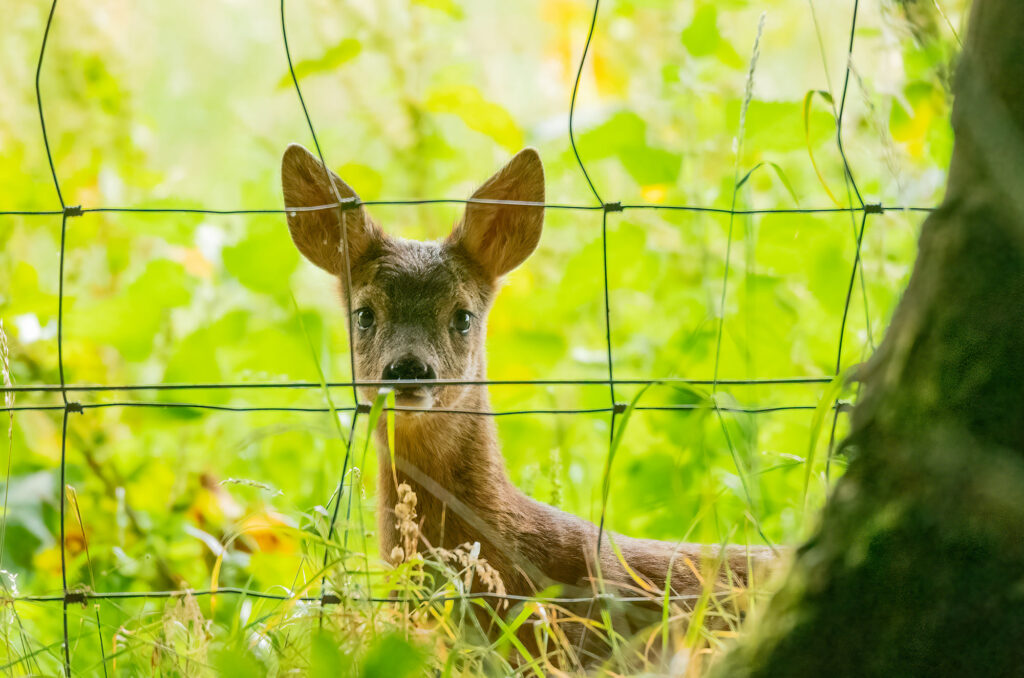
Kid gloves
After convincing myself that this was not a project and telling myself not to get attached to this roe deer family, I named them. This wasn’t entirely my fault; the new Jurassic World: Dominion film had just come out at the cinema, and the dedication of the mother velociraptor (Blue) to her baby (Beta) brought to mind the doe. From that moment, the little family became Blue, Beta and Gamma.
Becoming attached is not such a bad thing. I have got to know this little family, and they don’t seem to mind me hanging around. This toleration is probably due to a set of rules that I stick to when photographing Blue and the babies:
- Do think how a predator would behave and then do the opposite
- Don’t be too quiet. I talk to the deer a lot, and they have gotten used to the sound of my voice. Blue knows me so well that she even nods off while I chat away. The use of my voice also helps them to trust me specifically, rather than all humans – which could cause them to come into conflict with people.
- Don’t hide. The deer seemed to get more spooked when I partially hid than when I was easy to spot. Staying still and regularly averting my gaze helps them to relax in my presence.
- Don’t stalk. Following the deer can push them into flight mode, causing them to run. Instead, I position myself in spots where they are likely to pass through and remain fairly static.
- Do leave each encounter on a positive note
- I aim to be the first to walk away so that the family understands that they will always be left in peace and that no harm comes to them when I am around. This approach often means leaving when I would prefer to continue watching them but the result is that I am rewarding their trust with each encounter – which was particularly relevant to the image below. The kid was ambling towards where I was sitting, and I was aware there was a good chance both the baby and Blue would suddenly panic when they realised the lack of distance between us. So I backed off.
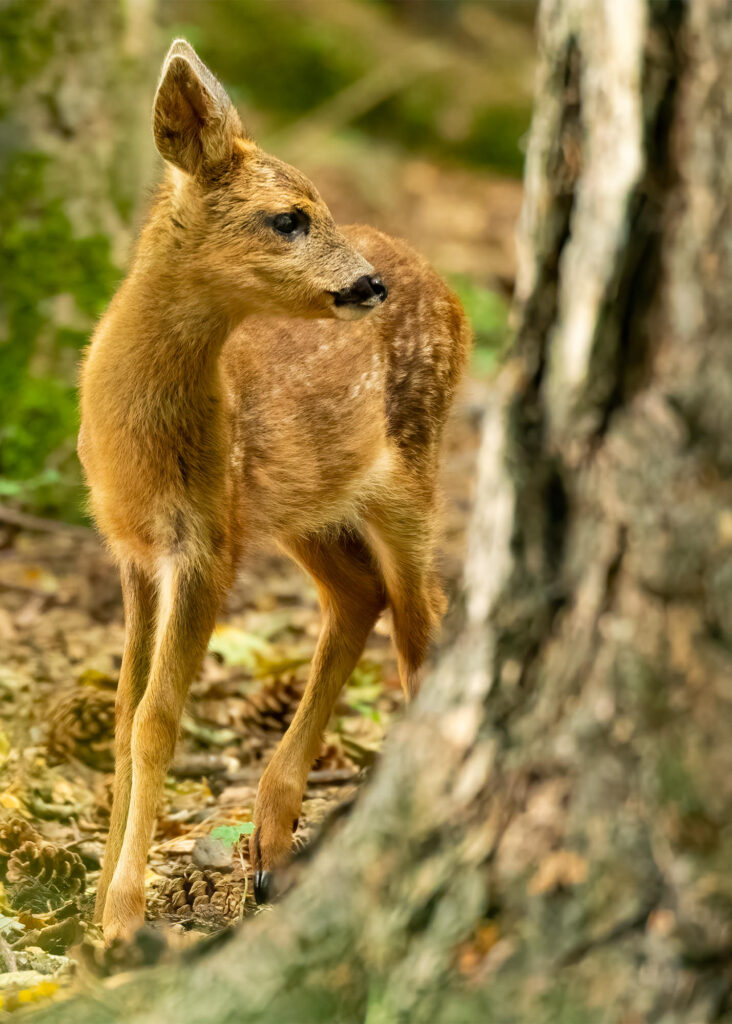
Apart from that, my usual wildlife photography tips apply – patience, persistence and an understanding of the world from your subject’s perspective. For anyone reading this who is worried about the lack of time they have for their wildlife photography, I hope my approach proves that you don’t need to spend long days in the field to capture intimate images like this if you do the groundwork. An hour can be more than enough time.
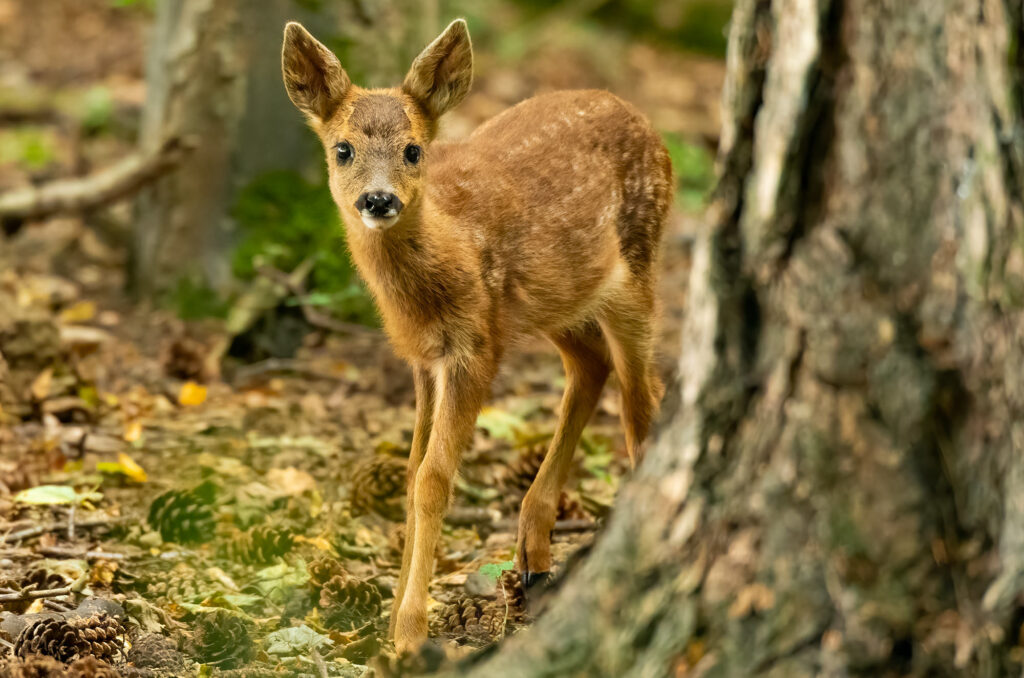
Big kids
In recent days, I have had the opportunity to photograph and film the twins. Goodness, have they grown.
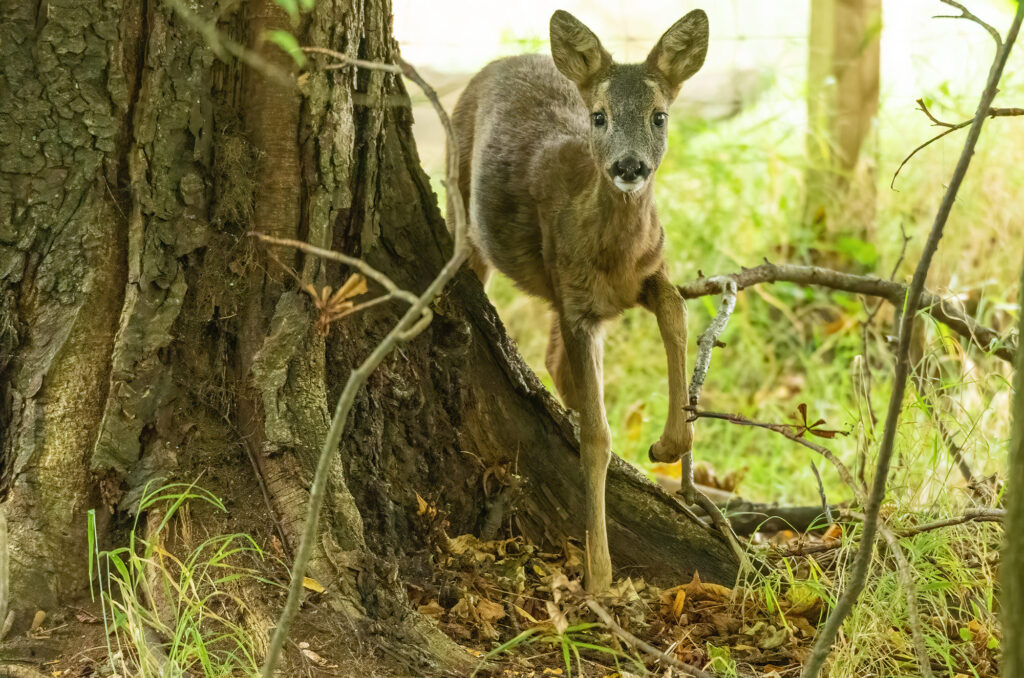
Unfortunately for Blue, they don’t seem to have received the memo. Despite being able to feed themselves, they still try to suckle while nearly knocking her off her feet.
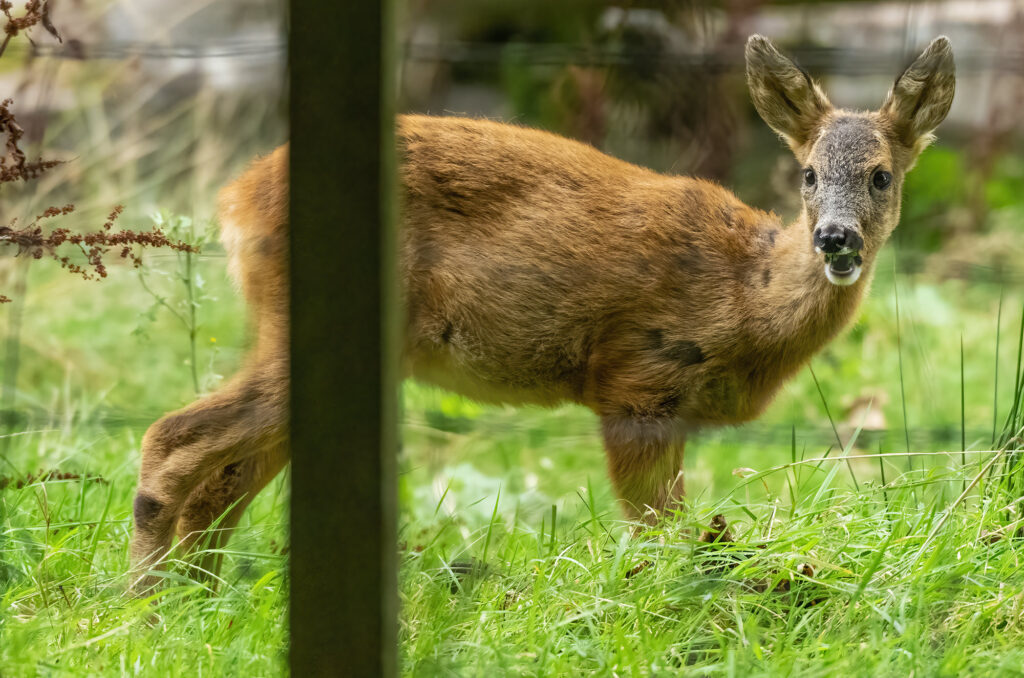
I will continue to follow their antics but, right now, it is simply a joy to see them thriving, and I consider it an achievement to have earned their trust.
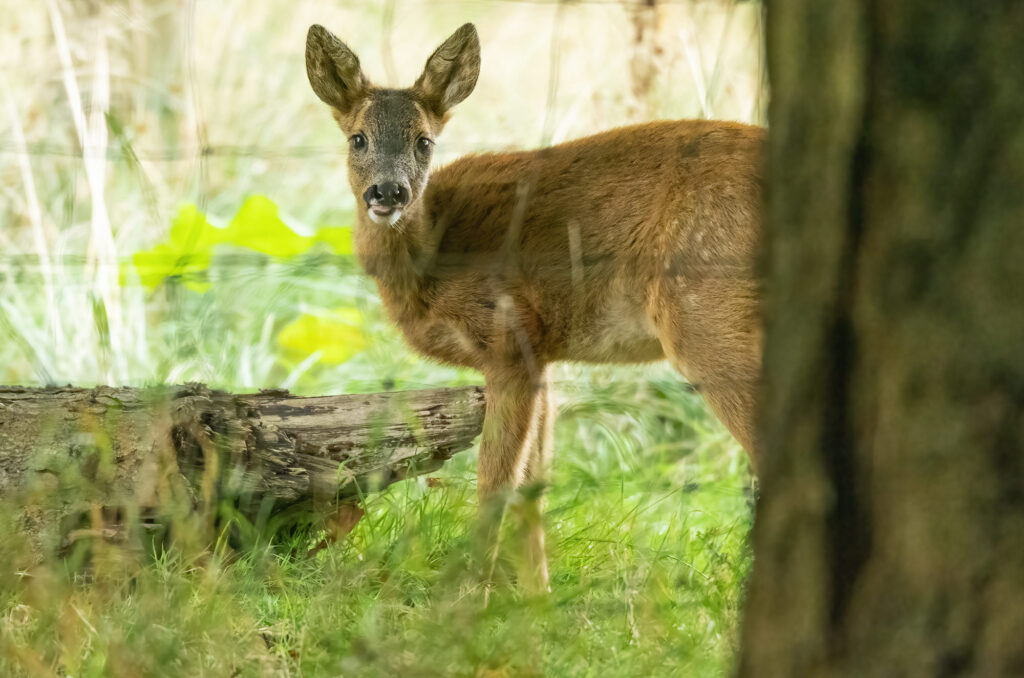
Many photographers will be focused on the red and fallow deer ruts at the moment, watching impressive stags in their viewfinders and getting excited as the antlers begin to clash. This autumn, the roe kids are more than alright for me.
Watch the videos below to see how the kids have progressed from learning the ropes to confidently exploring their territory.
If you are interested in photographing deer, I recommend reviewing the code of conduct on the British Deer Society website. They developed the code with the help of their wildlife photography ambassador – and experienced deer photographer – Jules Cox.

